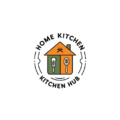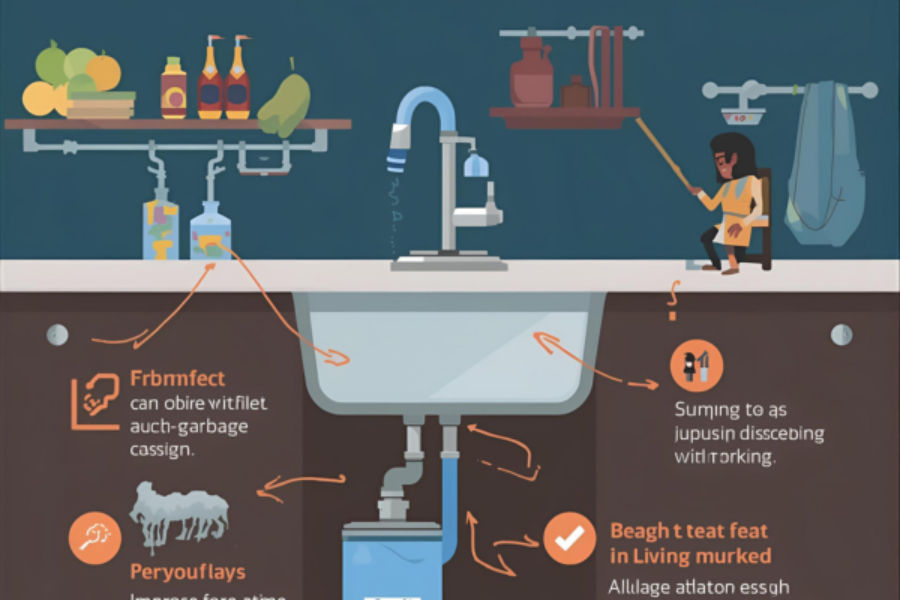We’ve all been there—standing in front of a clogged kitchen sink, the water barely draining, and the kitchen quickly becoming a mess. When you have a garbage disposal, the issue often becomes more complicated. If the disposal isn’t working properly, it can leave food waste sitting in the sink and cause frustrating blockages. A malfunctioning garbage disposal thumb control can make it even harder to clean dishes, rinse produce, or wash the sink itself.
But don’t worry, tackling a clogged sink with a garbage disposal doesn’t have to be a difficult task. In this blog, I’ll walk you through a clear, step-by-step guide on how to unclog your kitchen sink with a garbage disposal, helping restore your kitchen’s functionality quickly and efficiently.
Understanding the Kitchen Sink and Garbage Disposal
Before we dive into how to fix the clog, let’s first understand how the garbage disposal and sink work together.
How a Kitchen Sink and Garbage Disposal Work Together
A garbage disposal helps with the day-to-day disposal of food scraps by breaking down waste into small pieces and pushing them down the drain. The water you use while rinsing dishes or cleaning produces waste, and the garbage disposal’s function is to grind up that food and make it easier to flush through the plumbing system.
However, the drainage system depends on whether the disposal Cleaning Guide for Home & Kitchen works correctly. If the garbage disposal is clogged or malfunctioning, it can lead to a slow drain or no drain at all, causing standing water in your sink.
Common Causes of Clogs in a Garbage Disposal
Several issues can lead to clogs in the garbage disposal. Some common causes include:
- Food Waste Buildup: Small food scraps that don’t break down properly can clog the system.
- Grease Accumulation: Pouring grease down the disposal can cause sticky clogs that trap food particles.
- Foreign Objects: Non-food items, like utensils, bones, or seeds, may get stuck in the disposal.
- Improper Use: Overloading the disposal or putting fibrous foods like celery or potato peels down the drain can lead to blockages.
Safety First – Precautions Before Unclogging
Before you start working on your garbage disposal, it’s important to take the right safety precautions.
Turn Off the Power to the Garbage Disposal
Safety should always be the priority when working with any appliance, and with garbage disposals, it’s especially important to ensure there’s no chance of accidental activation. Turn off the power to the unit by either unplugging it or switching off the circuit breaker that powers it.
Protecting Yourself and the Sink Area
Wear rubber gloves to protect your hands from sharp objects, and make sure to lay towels around the sink to absorb any spilled water or debris. It’s important to avoid touching anything inside the disposal with your bare hands.
Tools and Materials You’ll Need
While unclogging a garbage disposal is usually a simple task, having the right tools will make the job smoother.
Basic Tools
- Flashlight – To inspect the disposal for any visible blockages.
- Plunger – To help clear any clogs in the sink drain.
- Hex Key – For manually rotating the garbage disposal blades.
- Tongs or Pliers – To remove any foreign objects or debris.
- Rubber Gloves – For safety and hygiene.
- Baking Soda and Vinegar – To clean and freshen up the disposal.
Optional Tools for Tougher Clogs
- Drain Snake or Auger – For deeper clogs in the plumbing that cannot be cleared with a plunger.
- Pipe Wrench – Useful for loosening any tight or stuck connections in the plumbing.
Step-by-Step Guide to Unclog a Kitchen Sink with a Garbage Disposal
Here’s a simple, step-by-step guide on how to unclog your kitchen sink, with a focus on the garbage disposal.
Step 1: Check the Power
Before beginning, always ensure that the garbage disposal is turned off completely. This is essential to avoid any accidents. If the disposal is plugged in, unplug it, or if it’s hardwired, turn off the circuit breaker.
Step 2: Inspect the Disposal
Use your flashlight to inspect the garbage disposal for any visible blockages or debris. It’s common for utensils, food scraps, or even small bones to get stuck inside the unit. Using tongs or pliers, carefully remove any foreign objects. Be cautious and never reach inside with your hands.
Step 3: Use the Reset Button
If the disposal was working before the clog but suddenly stopped, check for the reset button located at the bottom of the unit. Pressing this button can help reset the motor, which may have tripped due to an overload or blockage.
Step 4: Clear the Clog Using the Hex Key
For tougher clogs or jams, you may need to use a hex key to manually rotate the disposal blades. Insert the hex key into the bottom of the disposal unit and gently rotate it back and forth. This motion will help loosen any trapped food particles and clear the blockage.
Step 5: Use a Plunger
If the clog persists after you’ve cleared the disposal, use a plunger to address the sink drain. Cover the sink’s drain with the plunger, ensuring it creates a tight seal. Then, plunge up and down to generate pressure and force the clog through the pipes. This method often works when the blockage is just beyond the disposal.
Step 6: Clean the Disposal
Once the clog is cleared, it’s important to clean the disposal. Pour baking soda into the disposal and follow with vinegar. Let it sit for a few minutes to break down any remaining debris and neutralize odors. Afterward, rinse the disposal with hot water to flush out any residue.
Step 7: Check for Leaks
Before calling the job done, check all connections and pipes to ensure there are no leaks. Run the faucet and check for any drips around the disposal or drain. If you find any, tighten the connections or apply some Teflon tape to the threads to prevent water from leaking out.
Additional Tips for Preventing Future Clogs
Once you’ve successfully unclogged your kitchen sink, the next step is to prevent future clogs from happening.
Proper Garbage Disposal Usage
To avoid clogs, ensure you’re using the disposal correctly. Never overload it, and avoid putting fibrous foods like celery, potato peels, or grease down the drain. Run cold water while the disposal is on to help clear food waste and prevent clogs.
Regular Maintenance
Perform regular maintenance on your garbage disposal by grinding ice cubes or citrus peels to keep the blades sharp and fresh. This helps prevent build-up and ensures optimal performance. Clean the disposal once a month using natural ingredients like baking soda and vinegar.
How to Dispose of Waste Properly
Always remember that your garbage disposal is for small food scraps only. Never put bones, grease, plastic, or large food scraps in the disposal, as these can easily cause clogs.
When to Call a Professional
Sometimes, despite your best efforts, you may not be able to unclog your kitchen sink on your own.
Persistent or Deep Clogs
If the clog persists even after following the steps, or if water remains stagnant even after plunging, you may need a professional plumber. They have specialized tools like a drain snake to clear deep blockages.
Malfunctioning Garbage Disposal
If your garbage disposal is malfunctioning, making strange noises, or leaking, it may be time to replace it. If you’re not sure whether to repair or replace it, a plumber can help diagnose the issue and offer a solution.
FAQ
Q1: Can I use a chemical drain cleaner to unclog a kitchen sink with a garbage disposal?
Avoid chemical cleaners, as they can damage the disposal’s components. Opt for natural methods like baking soda, vinegar, or a plunger.
Q2: Why is my garbage disposal humming but not working?
A humming sound usually means the motor is running, but something is jammed. Try using a hex key to rotate the blades manually and clear the obstruction.
Q3: How often should I clean my garbage disposal?
Clean your garbage disposal once a month to avoid odors and buildup. Baking soda and vinegar are effective natural cleaners.
Q4: How can I avoid future clogs in my kitchen sink with a garbage disposal?
Avoid putting fibrous, greasy, or non-food items down the disposal. Run cold water while the disposal is running and perform regular maintenance.
Q5: Can I unclog a kitchen sink myself if the garbage disposal is broken?
If the disposal is broken and causing the clog, you can try using a drain snake or plunger. If this doesn’t work, you may need to call a plumber.
Q6: What should I do if my sink is clogged even after unclogging the garbage disposal?
If the sink is still clogged, the issue might be with the drain pipes. Use a drain snake or call a plumber to clear deeper blockages.
Conclusion
Unclogging a kitchen sink with a garbage disposal can seem daunting, but with the right tools and steps, you can resolve the issue yourself. Regular maintenance and proper usage can help prevent future clogs, ensuring your disposal remains in top shape. If you’re unable to fix the problem yourself, don’t hesitate to call a professional plumber for help. A little care and attention can go a long way in keeping your kitchen sink and garbage disposal functioning perfectly.

